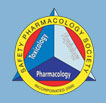|

SPS 2007 Sponsors
Diamond
($10,000 +)







Emerald
$7,500 to $9,999


Ruby
$5,000 to $7,499









Opal
$3,000 to $4,999






Sapphire
Up to $2,999



Lewis
B. Kinter &
Terry Timberlake-Kinter



|
General Information
Top 5 Reasons to Attend the SPS Meeting in Edinburgh,
Scotland
September 19-21, 2007!
- The SPS Annual Meeting is the most focused scientific
meeting targeting the role of safety pharmacology in drug
development. Presentations cover a spectrum from theory,
to practical experience and specific case studies.
- The SPS Annual Meeting is one of the best forums for international "best practice sharing" within the
pharmaceutical industry, with contract laboratories and with regulators.
- The SPS Annual Meeting offers a comprehensive program of continuing education courses to accomodate
both newcomers to the field, as well as those with experience in advanced courses.
- The SPS Annual Meeting highlights new areas in which safety
pharmacology is thought to have an impact in the future to improve
drug safety.
- The SPS Annual Meeting provides an exciting and fun forum for
networking with colleagues as well as a forum for exploring employment
opportunities in the area of safety pharmacology.
Keynote Speaker: Sir James W. Black, The Nobel
Prize in Physiology or Medicine 1988
Autobiography
I chose to study Medicine mainly under the influence of an elder brother, William, a graduate in Medicine at St Andrews some years earlier. In the cold, forbidding, greyness of St Andrews - with its dedication to "causes purely spiritual and intellectual, to religion and learning" (Andrew Lang) - I learned, for the first time, the joys of substituting hard, disciplined study for the indulgence of day-dreaming. Undergraduate prizes seemed to confirm that I was working harder than my colleagues in a new-found love affair with knowledge. An important catalyst in my conversion to scholarship was my first year encounter with Professor D'Arcy Wentworth Thompson, last of the great Victorian polymaths, author inter alia of the classic allometric study "On Growth and Form", and an intellectual giant if ever there was one.
My first year of research in Garry's laboratory introduced me to some simple ideas which, in a variety of ways, have dominated my thinking ever since. Garry was trying to find out how the intestine was able to absorb sugars selectively. Na iodoacetate treatment eliminated selective absorption and Verzar had deduced that the selectivity was based on phosphorylation. Learning that Garry's research student was showing that iodoacetate destroyed the intestinal epithelium, I wondered if iodoacetate was a general poison. What did it do to blood pressure, for example? When I developed the technology to show that, in rats, iodoacetate rapidly and irreversibly reduced the blood pressure to about 40 mm Hg, I was faced with the question which has influenced my thinking ever since: when and to what extent does local blood flow act as a metabolic throttle?
As I slowly learned, like a primitive painter, how to be an effective experimenter, ideas began to ferment. Work with Adam Smith on the effects of 5-hydroxytryptamine on gastric acid secretion was to surface again later on in my interest in the pharmacology of histamine-stimulated acid secretion. Work with George Smith, concerned with finding ways of increasing the supply of oxygen to the heart in patients with narrowed coronary arteries, led me to propose that reducing myocardial demand for oxygen by annulling cardiac sympathetic drive might be equally effective. By 1956, I had clearly formulated the aim, based on Ahlqvist's dual adrenoceptor hypothesis, of finding a specific adrenaline receptor antagonist. Egged on by their local representative, I successfully approached I.C.I. Pharmaceuticals Division for help and ended up being employed by them at their exciting new laboratories at Alderley Park, Cheshire. During my six years with them Dr Garnet Davey (subsequently Research Director) constantly supported me and, I have no doubt, fought many battles on my behalf to keep the initially controversial programme going. All I ever promised was that I was sure I could develop a new pharmacological agent which might answer a physiological question. Any utility would be implicit in that answer.
My years at I.C.I., between 1958-1964, were some of the most exciting of my life. I was assigned a brilliant chemist, John Stephenson. He taught me about modern deductive organic chemistry; how to be more than merely curious about a molecule with an interesting biological effect: how to ask questions about it. He converted me to pharmacology. Indeed, my whole experience at I.C.I. was an educational tour de force. I had to learn how to collaborate across disciplines, how to change gears when changing from research to development, how to make industry work - in short, how to be both effective and productive.
Among the numerous people who were involved in bringing the first beta-receptor antagonist to the marketplace, three played crucial roles. Bert Crowther masterminded the medicinal chemistry development. Genial, enthusiastic and highly experienced he was a splendid colleague. Bill Duncan, biochemist, brilliantly controlled the linchpin between research and development. He illuminated the black box between drug delivery and effect, developing analytical methods for estimating the levels and tissue distribution of a drug and its metabolites which allowed us to monitor and control toxicity tests, human pharmacology and clinical trials. Duncan brings brio and bravura to everything he does; and he is reliably my severest critic. Without him I would have made many more mistakes than I did. Brian Pritchard, clinical pharmacologist at University College, London, spearheaded the clinical development of the beta-adrenoceptor antagonists and crusaded on their behalf - as well as revolutionising their use by his discovery of their antihypertensive effect.
By 1963, I faced opposing pressures. I saw that the success of the beta-receptor antagonist programme would suck me more and more into the role of giving the young propranolol technical support and promotion - just as I was itching to start a new programme. I was convinced that the histamine antagonists of the day were analogous to the alpha-receptor antagonists and that the equivalent of a beta-receptor antagonist was needed to block, for example, histamine-stimulated acid secretion. Then Edward Paget, Head of Pathology at I.C.I., who had accepted the Research Directorship at Smith, Kline & French Laboratories asked my advice about finding a pharmacologist to run the biological research there. Half-jokingly, I asked what was wrong with me. So we made a deal: I would run his biological research provided I had a free hand to run my new project. Bill Duncan joined me to run the Biochemistry Department, so maintaining a tremendously successful partnership which lasted 15 years.
The histamine project, modelled by analogy with the beta-adrenoceptor project, was also somewhat controversial at the beginning. It succeeded because of the faith of my managers and the scientific skill and devotion of my colleagues. When I was struggling at the front, Bill Duncan was defending the rear. Mike Parsons adopted the new pharmacology with rare enthusiasm and commitment and became one of the doughtiest colleagues I have ever had. I think we made a good team. Graham Durant made the initial breakthrough with a partial agonist, and Robin Ganellin exploited that lead by brilliant, deductive, medicinal chemistry. The years I spent working with Ganellin were the most sustained, intellectually exciting and productive period of medicinal chemistry I have ever experienced. John Wyllie, surgeon from University College London, contributed the last critical piece in a sucessful mission.
By 1972, the H2-receptor antagonist programme was launched, cimetidine was in development and I was looking for a new project. I was now totally committed to arranging marriages between bioassay and medicinal chemistry. Obvious candidates existed, such as 5-hydroxytryptamine, but other shadowy ideas were lurking about in my imagination.
The potential freedom from commercial constraints in academia was looking more and more attractive. Yet, when I was eventually offered the Chair in Pharmacology at University College, London, I was apprehensive about my ability to achieve my new goals. I had developed two ambitions. In research, I wanted to establish the medicinal chemistry/bioassay conjugation as an academic pursuit, as exciting to the imagination as astrophysics or molecular biology. In teaching, I wanted to offer a general pharmacology course based on chemical principles, biochemical classification and mathematical modelling. In the event I achieved neither of my ambitions. I failed to raise support for my medicinal chemistry project - by academic peerreview standards my proposals were altogether too wispy and expensive. My ideas about teaching based on a catechismal approach to drugs in general, rather than cataloguing drugs in particular, turned out to have too many curricular difficulties. I did help to set up an undergraduate course in medicinal chemistry and made progress in modelling and analysing pharmacological activity at the tissue level, my new passion. But after four years, I was suffering from withdrawal symptoms from lack of a chemical collaboration. Thus, I eagerly accepted John Vane's invitation to join the Wellcome Foundation.
My years at the Foundation (from 1977 to 1984) were an emotional roller-coaster. I wanted to make use of ideas I had been chiselling out, over the years, about the differences between successful and failed industrial projects. The division I took over at Wellcome, however, was remarkable for its traditional, conservative, ways and feudal structures. Entrenched attitudes can absorb reformist efforts like a punch bag. Yet despite disappointment in my managerial role, I made great progress in my own research. Working with brilliant young investigators such as Paul Leff, I began to see analytical pharmacology as a viable discipline. I had found myself a new mission - and once more my recurring dilemma between corporate commercial needs and personal scientific ambitions was solved unexpectedly. The Wellcome Foundation offered me the chance to establish a small academic research unit, modestly funded, but with total independence. The real opportunity, however, came from King's College, London. The College and Medical School between them have not only solved problems and smoothed diffficulties they have positively welcomed and supported my small unit. In intellectual terms the last five years at King's have been the most productive in my life. Surrounded by talented researchers and PhD students, I feel I have found my niche at last.
Read more about Sir Black at: nobelprize.org
From Les Prix Nobel. The Nobel Prizes 1988, Editor Tore Frängsmyr, [Nobel Foundation], Stockholm, 1989
Copyright © The Nobel Foundation 1988
Payments & Deadlines Information
|